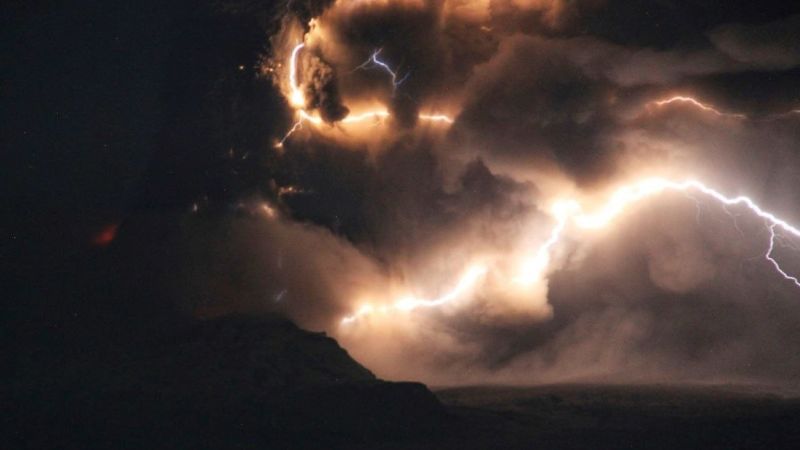The earthquake in Russia which struck early Sunday was measured at a magnitude of 7.0 by the US Geological Survey (USGS). The epicenter was located approximately 63 miles east of Petropavlovsk-Kamchatsky. The quake occurred at a depth of 18 miles below the surface.

Also Read: Hurricane Ernesto Heads Towards Bermuda, With Impacts on Atlantic Canada
Shiveluch volcano erupted, the eruption spewed plumes of ash up to 5 kilometers into the sky, prompting a temporary code red warning for aviation.
The ash cloud extended approximately 490 kilometers east and southeast of the volcano. In addition to Shiveluch the Ebeko volcano located on the Kuril Islands also erupted sending ash plumes 2.5 kilometers (1.5 miles) into the air.
The Kamchatka Volcanic Eruption Response Team (KVERT) issued a code red alert for aircraft due to the substantial ash clouds produced by the eruptions.
The Volcanic Ash Advisory Center (VAAC) in Tokyo confirmed explosive activity with ash presence in the atmosphere.
There were no immediate reports of damage to aviation infrastructure or disruptions to commercial flights. The code red warning was eventually downgraded.
The US National Weather Service’s Pacific Tsunami Warning Center in Honolulu initially issued a tsunami threat for coastal areas within 300 miles of the earthquake’s epicenter.
A series of aftershocks were recorded in the Pacific Ocean off Kamchatka ranging between 3.9 and 5.0 in magnitude.
The Kamchatka Peninsula is one of the most volcanically active regions in the world, home to over 160 volcanoes, 29 of which are still active.
Also Read: Greece Wildfire: Residents Evacuated as Wildfires Near Athens Spreads
On August 17, 2024, a 7.0-magnitude earthquake struck off the coast of Russia’s eastern region. The epicenter was approximately 63 miles east of Petropavlovsk-Kamchatsky.
The quake occurred at a depth of about 30 miles beneath the Pacific Ocean. Due to its proximity it was felt strongly in the surrounding areas including Petropavlovsk-Kamchatsky.
There were no immediate reports of damage or casualties. However buildings in the affected areas were examined for structural issues.
A tsunami warning was initially issued by the US Tsunami Warning System, predicting hazardous waves within 300 kilometers of the epicenter. However this warning was later lifted and no major tsunami event occurred.
The eruption sent a massive column of ash approximately 8 kilometers into the atmosphere. This display was visible from miles away and prompted immediate concern for air travel in the region.
The Kamchatka Volcanic Eruption Response Team issued a Code Red alert for aviation, warning of disruptions to air traffic.
This warning is critical, as volcanic ash can severely damage aircraft engines. Despite the severity of the eruption no commercial flights were reported to be disrupted.
The authorities closely monitored the situation and the alert was later downgraded as the immediate threat diminished.
The Kamchatka Peninsula has a history of volcanic eruptions. Events include major eruptions in 1854 and 1964, both of which caused geological changes.
The 1964 eruption led to a large part of the Shiveluch lava dome collapsing.
The region also experienced a 9.0 magnitude earthquake on November 4, 1952, which caused huge damage, though no deaths were reported. The earthquake generated massive 30-foot waves in Hawaii.
Also Read: World’s Oldest First-Time Panda Mom Ying Ying Gives Birth to Twin Cubs





















